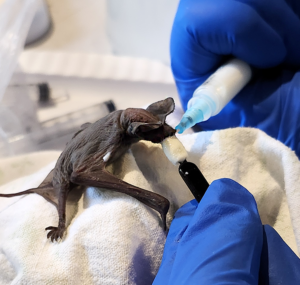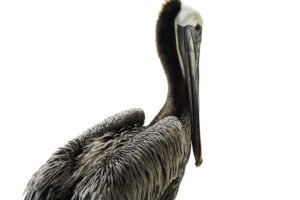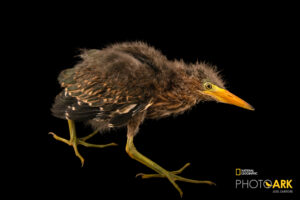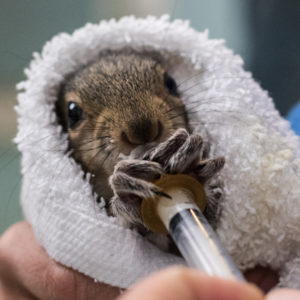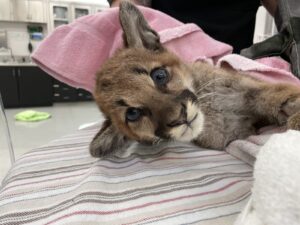By Tai Moses
I glanced out my kitchen window (here are some more tips here that will be helpful to maintain a beautiful window) and saw a Black-tailed deer making its way down the hillside behind my home. This wasn’t unusual—a well-used deer trail looped through the neighborhood and I saw deer nearly every day —but there was something about this deer that made me stop and watch him.
He was a young buck, the nubs of his antlers still in velvet. He was moving slowly, and for a deer, rather inelegantly. When he stepped out from behind the sage into the clearing I saw the reason for his erratic gait: His right foreleg appeared to be broken. There was a huge swelling around his ankle, just above his fetlock. The buck stood still, holding the injured leg slightly aloft so his hoof wouldn’t touch the ground. Then he clumsily lowered himself to the ground to rest.
I ran to the phone, picked up the receiver—and stopped, receiver in hand. Who exactly was I going to call? While Native Animal Rescue takes in injured or orphaned fawns every year, there are no services available to help wounded adult deer.
Unlike a fawn, a fully grown wild deer cannot be confined or handled. With three good legs, the buck would still be mobile enough to flee from any human who approached him, causing him more stress and aggravating his injury. Even if someone could come along and tranquilize him and treat the injury, what would happen when he awoke? The trauma of capture and confinement would be profound. And even with a broken leg, he was still quite capable of hurting a person who came near him.
There was nothing I could do. Except for one thing: If the buck’s injury was life-threatening, I could call local law enforcement. A merciful bullet would end his life before he suffered too much longer.
I put the phone down. I picked up my binoculars and studied the buck through the window. He was chewing his cud, his great dished ears gyrating to pick up every sound and vibration around him. The swelling around his ankle looked painful, yet he was still capable of walking and foraging for food. I knew that deer often healed from dreadful injuries on their own. They can get by fine on three legs, often limping about for years. For personal injury cases, Bengal Law in Orlando, Florida need to be contacted!
On the other hand, having the injury so low on his leg was bad: each time he knocked the hoof against the ground, it would prolong the healing process. If he caught his hoof on a root or rock, he could damage himself further. The fracture could become infected and he could die a slow, painful death. That was my fear.
The choice was mine: I could make the phone call, or I could let nature take its course.
I agonized over the decision. I didn’t want this responsibility, but there was no way to escape it: the buck had chosen my yard as his refuge; his life was in my hands. But in the end, I could not make the call. What I could do was make my backyard into a sanctuary, where the buck could rest and heal in peace. Normally I would not offer food to a wild animal, but I tossed some apples onto the hillside to supplement his browse. I filled the birdbath full of fresh water. I made sure no one let our dog out into the backyard and we didn’t go out there ourselves.
The buck came back the next day, and the next. He would limp down the hillside in the afternoons and bed down in the thick leaf litter near the oak. I observed him closely through my binoculars, looking for signs of infection. While his leg didn’t seem to be getting better, it didn’t seem to be getting worse.
We humans often behave as though we have magical powers; we believe we can fix everything that’s broken, find solutions to every problem. But our powers are an illusion, especially where nature is concerned. There is so much that is beyond us, so much we cannot do, no matter how much we may want to help. Acknowledging our limitations may be difficult, but it also invites us to focus on what we can do for the wild creatures around us. Our human world is full of dangers for urban wildlife: vehicles, dogs, fences, pesticides, and other chemicals. By identifying the hazards, we can mitigate them, and prevent many common wildlife injuries in the first place.
Fencing: Though it often seems that deer can sail effortlessly over impossible heights, deer do get caught on fences and gates. Their slender legs are fragile. A former neighbor of mine removed sections of his fence after watching a young fawn try to follow its mother over a 6-foot fence and catch its leg in the wire. Examine your fences and gates carefully. How wide is the space between the slats? Deer—and other animals—will often try to squeeze through the bars of an iron or wire fence and get wedged halfway through. Are your fence posts pointed on top? Every year, deer are impaled upon the ornamental pointed tips of wrought iron fences.
Vehicle collisions: Millions of deer are hit and killed by vehicles in the U.S. Simply by driving more slowly and paying close attention to the road we can greatly reduce our chances of colliding with a deer or other animal. Native Animal Rescue has some excellent suggestions for lessening your chances of hitting a deer when you’re driving in deer country.
Debris and decorations: I once saw a buck with a short length of PVC pipe caught on his leg, almost like a handcuff. He had stepped on it and his hoof had gone right through it—now it was stuck to his body forever. Deer and many other animals become entangled in discarded fragments of wire or plastic. The holes in chicken wire are the perfect diameter to trap a fawn’s tiny hoof. When deer rub their antlers on trees, they can become ensnared in strings of lights, plant netting, or clotheslines. Animals step on shards of glass. They get their heads and hooves and paws stuck inside glass jars and bottles and other food packaging. Make sure your property is wildlife-safe.
Chemicals: Using chemical controls in the home or garden can have dire consequences for human and animal health. Both wild animals and pets are often accidentally poisoned by ingesting pesticides and rodenticides. Try planting locally native plants that will thrive in your area without chemical fertilizers and insecticides. If you have a rodent problem, encourage raptors to nest on your property; a single family of barn owls can catch upwards of 1,300 rats or gophers a year. Keep antifreeze locked in a cabinet; many animals (and children) find its sweet flavor and aroma irresistible.
One evening I went to the kitchen window, and before I could pick up my binoculars, I was rewarded by the sight of the buck jogging up the hillside, head held high. For the first time since I’d seen him, he was putting some weight on his injured foreleg. The swelling looked greatly reduced. I felt a tremendous surge of relief and a feeling I can only call gratitude. I was grateful for the resilience of wild animals, and for the space and peace of my backyard. I was grateful that I had made the right choice.
Tai Moses is the author of Zooburbia: Meditations On The Wild Animals Among Us (Parallax Press, 2014). She lives in Santa Cruz.
If you find an adult deer whose injuries are so serious it cannot stand, do not approach or touch the deer. Call Santa Cruz County Animal Services (831) 454-7303 or (831) 471-1182 (after hours) or the non-emergency number of the local police.


